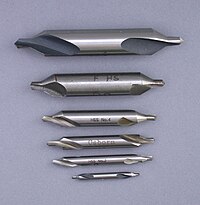Schnitzengiggle
Well-Known Member
I have a very small project that I am working on and I need to cut a piece of stainless tube (just 2 simple straight cuts). It is my understanding that when using a hacksaw, or any type of non stainless metal-to-stainless metal cutting, the stainless becomes contaminated with the other steel and can rust at that point.
So my question is do I cut with a hacksaw or sawzall, then clean up with sandpaper, or will a cutting disk on my miter saw be better?
FWIW, I don't have a miter saw cutting disk, so I will have to incur that cost if I want to do it that way (which would provide the cleanest most accurate cut I assume), but I have a hacksaw.
What would you do/suggest?
So my question is do I cut with a hacksaw or sawzall, then clean up with sandpaper, or will a cutting disk on my miter saw be better?
FWIW, I don't have a miter saw cutting disk, so I will have to incur that cost if I want to do it that way (which would provide the cleanest most accurate cut I assume), but I have a hacksaw.
What would you do/suggest?




